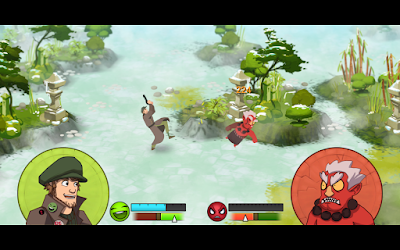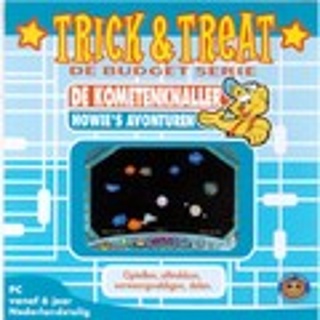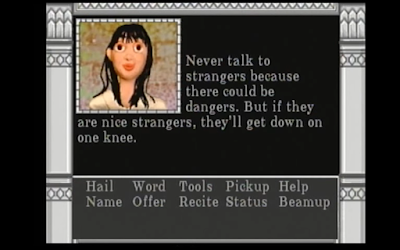For now though, I'll just go over my thoughts about 2017, things I've done, games I've played and such, should be interesting to look back to next year hopefully.
Internship
2017 has been quite the eventful year for me, looking back at how I started the year I can definitely say I've grown up in some areas! It was in December 2016 that I got the news I could start my internship at the Tax and Customs Administration (TCA) from March through August of 2017.So I spent the first two months of the year just being at home, kinda relaxing period of my life but I can barely remember any of it.
I remember being pretty anxious to start my internship, it was my first real experience on the workfloor and working for the TCA was something I was really excited for during my studies, but once I started my internship there things ended up going really well. The first few weeks were mostly learning the ropes, but as time went on I got more and more autonomy, being able to go over cases and form my own thoughts about them and writing out letters and replies.
One of my main worries was getting along with co-workers, since there's a big age gap between myself at the age of 22 and the average age of employment at the TSA of above 50. I kept worrying I wouldn't be able to relate at all and things would be awkward, though as it turned out I wound up getting along well with the others. My supervisor was really helpful throughout my internship, always in a good mood and willing to help out. I mostly either sat with my supervisor or with another intern my age, her internship started and ended earlier than me so she was able to alleviate some of my concerns and it was nice taking walks together, and just having someone my age who was also an intern to talk to. Kind of a shame I've not really had contact with her since, hm. That tends to happen.
Still, I am really glad I got to intern for six months, it was a good introduction to the 'real world' and gave me a lot of chances to apply theoretical knowledge in practice. I knew my internship was going to end in August though and that it would be back to job hunting from then on, which I really wasn't looking forward to.
The ceaseless, unending, horrendous job search
You know what sucks? Looking for a job as an inexperienced rookie still fresh from his first internship at the TSA in a part of the country with little demand for my area of expertise. Looking for a job was a tedious process of hunting the web for jobs, writing application letters, usually getting a negative reply or no reply at all and in the few cases where I'm invited to a job interview, going there and being told the same few lines over and over again.
"You come across as a very bright and academic individual."
"You're not very experienced."
"You're overqualified."
"Have you considered applying at a bigger office?"
"Have you considered applying at a smaller office?"
"We'll contact you when we find a suitable position."
I'd go away from most interviews thinking it went as well as it could have, I had left embarrassing interviews behind me in 2016, but it was still just never good enough, there was always someone else who was just more experienced than me, or lived closer to work than me, or seemed more socially mature than me. Someone less fusty and academic, someone with a more fitting study, someone who was willing to work in Amsterdam. It was a stressful period.
Work, work, work
In the end I was very lucky to land myself an interview at an office who provide financial and fiscal services, which went well enough to get me a second interview, which in turn also went well enough to land me a job in the fiscal department starting December first 2017.
It's still quite exciting to think about, even after I've been employed for a month. I've spent the past few weeks getting the hang of things, so 2018 is when I'll really have to prove myself.
Aaaaaa, video games!!!
Enough about all that crap! Video games!! I've been playing video games in 2017!!!
I wound up playing quite some games over the year, no doubt fueled by the fact that I war earning money during the year so I bought some games on Steam as well as some emulation and a 3DS game! What better time to talk about them than mere hours before the year ends?!
Shovel Knight
While I think I finished Shovel Knight's base campaign and the Plague Knight expansion in 2016, the Plague Knight expansion came out in 2017 and it was amazing!
I also wound up replaying the whole game, doing a bunch of challenges along the way. Of particular note was a run of Spectre Knight's campaign with a cheat code on that gave me permanent rail grinding at ludicrous speeds which actually made the game incredibly difficult and any precise platforming segments hellish. And it was awesome!
I actually intended to write a blog about this game, but I felt like everything had already been said about it, so I didn't end up going through with it. Seriously go buy it already, it's good!!
Roundabout
I've written about this in a blog already! But Roundabout was a hilariously cheesy FMV game and was quite wonderful. I can definitely see myself replaying this down the line.
Chip's Challenge 1&2
Another game I intended to write a blog about, Chip's Challenge and its sequel are action puzzle games, meaning they combine mind-bending puzzle gameplay with some dastardly timing-based challenges.
Overall I found the level design of CC1 rather archaic and often levels felt bigger than they needed to be, but CC2 improved on the original by a wide margin by including more interesting game elements as well as improved level design.
Of particular note was a level pack for CC2, called Mobi's Challenge, made by Mobius. It boasted 166 levels and it was generally more quirky and varied than CC2 was, which made it more to my liking. I had a lot of fun solving every puzzle and the game kept throwing innovative combinations of gameplay elements at me so every level felt fresh and exciting. I definitely recommend getting it if you get CC!
Resident Evil 5
I feel like this game gets a bad rep. RE4 was a great game, one I've played many times, so when I saw that RE5 was on sale for PC I decided to buy it despite having played it on PS3. I had fun playing through the campaign solo, I never felt like the AI is as bad as people say, and while the game suffers from just not having the superb level design of RE4 and too many actiony segments without enough downtime, it's still got a satisfying gameplay loop.
The DLCs included in the version I bought are neat too, the extra scenarios offer both a more classic survival horror campaign which was nostalgic to pay through and a fully action-oriented campaign to gun a way through. Plus, it has the best version of The Mercenaries minigame, which is all about high-score based play with a time limit, eeee, it's exciting! I actually wound up doing over half the stages with every character, I ought to get back to it and finish the rest up.
Wuppo
I bought Wuppo based on a video I saw calling it a mostly undiscovered gem, and I've got to agree with that anaylis. Wuppo felt like a very comfortable action/adventure game, with a good balance between talking with NPCs, combat and puzzles. It somewhat reminded me of Laser Lords with how the world felt internally consistent and how much emphasis there was on gathering info by talking to people and doing things for them. Another game I definitely need to give another shot sometime in the future.
Mibibli's Quest
Mibibli's Quest is an incredibly bizarre sidescrolling platformer inspired by Mega Man I was led to by the same video that led me to get Wuppo. A trial version that contains pretty much the full game is available for free online and it's worth checking out just to see the concepts the game explores.
I found it a worthwhile and fun experience overall, though the game was too difficult for my liking so I ended up playing it on the super easy difficulty and still having trouble with it here and there. No shame in playing an easy mode though, if it makes the game more fun, as it did in my case.
Pokémon Sage
Remember that blog post I wrote about Pokémon sage's dex like two years ago?! Well, they released a new demo since then and it goes up to the third of eight gyms, so it's quite substantial!
I thought the difficulty curve was a bit hokey, the second gym especially kicked my ass, and it's a Pokémon Essentials game so it's also rather laggy and choppy at times, but aside from that it was an incredibly faithful and well-crafted Pokémon experience, the writing, graphics and music all feel like they'd be right at home in an official Pokémon game. I eagerly await a full release of the game and definitely intend to give it a play!
Giana Sisters DS
Giana Sisters DS is a pseudo-remake of the old Giana Sisters games, rip-offs from the Mario platformers which I hate oh so much.
Giana Sisters DS is another sidescrolling platformer with tight and responsive controls and pleasant pixelated graphics and retro OST light on difficulty but heavy on charm. It was a blast to play through the game in sessions of 5 levels at a time and I tore through the game in a matter of a week or so, platforming through each stage. I recommend checking it out if you're into sidescroller platformers.
Giana Sisters: Twisted Dreams
Like Giana Sisters DS, this is a sidescrolling platformer, though this game uses a 2.5D engine as well as a world shifting mechanic, which lets the main character, Giana, shift the game's world. The different worlds function as altered versions of each other, a cute dreamlike and a creepy nightmarish version of the same landscape which dynamically shifts along with the player with each having their own music and some gameplay elements that alter between worlds so you need to use both Cute Giana's twirl for air time in the sky and Punk Giana's dash to make it through narrow spaces and dash through obstacles and enemies.
The game's pretty difficult, but it's plentiful with its checkpoints and has infinte lives, so you're encouraged to explore and look for hidden gems as you get through the levels. I had a lot of fun playing through each stage and trying to collect every gem, and finished the Rise of the Owlverlord DLC quite recently, which introduced a few new gameplay mechanics and had several new stages to play around in. Another recommendation for platforming fans!
The Binding of Isaac: Antibirth
This one was a long time coming, I've found TBOI interesting for some years now, and I got into it as I was playing Giana. It dominated my free time for a while, as I suppose roguelike games have a tendency to, as RE:IS did for a while too.
TBOI is a kinda weird game, being about a young boy, Isaac, whose mother may have been commanded by god to kill it. It's got randomly generated floor layouts in which Isaac goes around shooting tears at enemies in a twin-stick shooter fashion as he collects various bizarre items that horrifically disfigure him. Tons of fun, that.
I also opted to install the Antibirth mod, a fanmade expansion, over going for the official expansions. My reasons for that are complex indeed and not something I really feel like going into. I dunno if I'll ever try out the official expansions. Anyway, I like the expansion a lot, apparently an update's coming in the first quarter of 2018, exciting!!
Braid
Braid is a wonderful puzzle-platformer game by the dastardly Jonathan Blow, who later went on to make the horrific The Witness.
Braid shares a lot of the qualities I admire in The Witness, the high degree of polish and care, but what sets it apart to me is that the basic gameplay of Braid is actually fun and it has an engaging plot. Braid is all about taking the core gameplay of Mario and playing around with the concept of time. Tim, the main character is able to rewind time as he wills, which creates interesting puzzles and makes the gameplay very forgiving, as any mistake can just be rewound.
I really wound up liking the game, the game kept throwing novel concepts at me with the intricate ways the game messes around with time, but it was never so hard that it made me give up, I ended up playing through in about 5 hours buy enjoying it all the way through. Except like maybe two puzzles.
The game's plot is also made to be analysed, and I found some interesting meaning in it since many aspects reminded me of Tobias' blog posts. Quite fascinating.
Sonny (Steam)
THE SONNY REBOOT IS SUPERIOR TO THE FLASH GAME AND I WILL FIGHT YOU IF YOU DISAGREE.
I intend to come back to this game at a later date. There is some lore that needs serious analysis.
Night in the Woods
This is a game I'm still playing though! It's kind of like a visual novel you can platform through with various minigames along the way and it's lovely and I love it.
I've still not fully beaten it, but this game's resonated with me in several ways. It has a very contemporary setting and deals with some relevant topics. While they might not affect me as much as they do the characters in the game, they remind me of things I read in the news and also sort of how it feels like to live in a part of the Netherlands that politics doesn't seem to be that concerned about.
Basically, it's good and worth checking out, but made for a certain type of person. And it's lovely and I love it.
Conclusion
In conclusion, while 2017 was kind of a terrible year from a global perspective, 2017 was very kind to me, letting me grow as a person from someone still fresh out of university to someone with a fulltime job! Whoo, career prospects! I do feel like I've grown as a person because of that, comparing myself during job interviews in 2016 and 2017, the 2017 version of me is a whole more mature.
I still have a lot of growing to do, as much as I feel I've grown in a professional way, I do feel like I've stagnated in other areas of my life. Hopefully 2018 can provide me chances to grow in those areas too!
Plus, video games. 2017 was a good year for video games, and I hope to keep buying and playing good video games in 2018 since I've got a steady income now. Woo!
Happy new year to all of you! Here's to a good 2018. With video games.





































